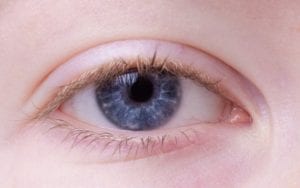
Understanding Blepharitis: A Common Eyelid Condition
Blepharitis is a surprisingly common eye condition, yet one that many people haven’t heard of until they experience its irritating symptoms. Essentially, it’s an inflammation of the eyelids, specifically affecting the margins where the eyelashes grow. It’s often a chronic (long-term) condition, meaning it can flare up periodically, but with proper management, its symptoms can be effectively controlled. It isn’t contagious and typically doesn’t cause permanent vision loss, but it can certainly cause significant discomfort and irritation.
There are two main types of blepharitis, though sometimes they can occur together:
- Anterior Blepharitis: This type affects the outside front of your eyelid, where your eyelashes are attached. It’s often caused by bacteria (usually Staphylococcus) or, less commonly, by tiny mites called Demodex. Symptoms often include flaky scales or crusts that build up around the base of the eyelashes.
- Posterior Blepharitis: This type affects the inner edge of the eyelid, the part that touches your eye. It’s usually caused by issues with the meibomian glands, tiny oil glands located along the eyelid margins. These glands produce the oily part of your tears, which helps prevent them from evaporating too quickly. When these glands become blocked or inflamed, they don’t produce enough oil, or the oil they produce is abnormal, leading to dry eye symptoms and irritation. This form is often associated with conditions like rosacea or seborrheic dermatitis.
The symptoms of blepharitis can be quite bothersome and often affect both eyes. They can include:
- Itchy, red, and swollen eyelids
- Burning or stinging sensation in the eyes
- Gritty or foreign body sensation, as if something is in your eye
- Crusty eyelids or sticky eyelashes, especially upon waking
- Excessive tearing or dry eyes (ironically, both can be symptoms)
- Sensitivity to light (photophobia)
- Loss of eyelashes (madarosis) or misdirected eyelashes (trichiasis)
Diagnosing blepharitis is typically done during a routine eye examination. An eye care professional will carefully examine your eyelids, eyelashes, and the oil glands using a special microscope called a slit lamp. They’ll look for redness, swelling, crusting, or signs of meibomian gland dysfunction.
Managing blepharitis primarily involves a consistent daily eyelid hygiene routine. While there’s no “cure” in most cases, regular care can keep symptoms at bay:
- Warm Compresses: Apply a warm, damp cloth or a heated eye mask to your closed eyelids for 5-10 minutes. This helps to soften crusts and loosen the oily secretions in the meibomian glands.
- Eyelid Cleansing: After the warm compress, gently scrub your eyelid margins and eyelashes. You can use a diluted baby shampoo, a specialised eyelid cleanser, or pre-moistened eyelid wipes recommended by your eye care professional. Wipe along the lash line to remove debris and oils.
- Lubricating Eye Drops: Over-the-counter artificial tears can help to relieve dry eye symptoms often associated with blepharitis, providing comfort and lubrication.
- Topical Medications: In some cases, particularly for bacterial forms, your eye care professional might prescribe antibiotic eye drops or ointments. For inflammation, steroid eye drops might be used for a short period.
- Oral Medications: For more severe or persistent cases of posterior blepharitis, oral antibiotics (like tetracyclines or doxycycline) may be prescribed to help reduce inflammation and improve oil gland function.
- Omega-3 Fatty Acids: Some evidence suggests that dietary supplements containing Omega-3 fatty acids can help improve the quality of meibomian gland secretions, aiding in posterior blepharitis management.
Living with blepharitis requires patience and consistency. It’s important to understand that it’s a manageable condition rather than one that can be cured completely. By sticking to a daily eyelid hygiene routine and following your eye care professional’s advice, you can significantly reduce flare-ups and enjoy much greater comfort. If you suspect you have blepharitis or are experiencing persistent eye irritation, it’s always best to consult an optometrist or ophthalmologist for an accurate diagnosis and a tailored management plan.
Treatment
There is no cure as such for Blepharitis. But the symptoms should be controlled through a systematic daily eye-cleaning routine. More severe cases may require antibiotics.